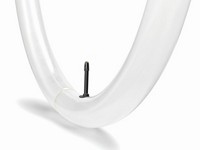Advertisement
Grab your lab coat. Let's get started
Welcome!
Welcome!
Create an account below to get 6 C&EN articles per month, receive newsletters and more - all free.
It seems this is your first time logging in online. Please enter the following information to continue.
As an ACS member you automatically get access to this site. All we need is few more details to create your reading experience.
Not you? Sign in with a different account.
Not you? Sign in with a different account.
ERROR 1
ERROR 1
ERROR 2
ERROR 2
ERROR 2
ERROR 2
ERROR 2
Password and Confirm password must match.
If you have an ACS member number, please enter it here so we can link this account to your membership. (optional)
ERROR 2
ACS values your privacy. By submitting your information, you are gaining access to C&EN and subscribing to our weekly newsletter. We use the information you provide to make your reading experience better, and we will never sell your data to third party members.
Business
In Search Of The Perfect Auto Tire
Polyurethane looks enticing, but it may not be the ultimate answer
by Marc S. Reisch
September 11, 2006
| A version of this story appeared in
Volume 84, Issue 37

Earth movers use them. so doforklifts, roller coasters, and mining equipment. They are polyurethane tires, or rubber tires filled with polyurethane foam, and they are engineered to endure the heavy lifting, pushing, rolling, and other punishing conditions to which industrial equipment is subjected.
These tires do not deflate, don't suffer from blowouts, and survive under the most trying conditions. But the jury is out on how far polyurethane can penetrate the automobile tire market. Many observers think polyurethane's use will be limited to only a modest application, as inserts for new run-flat tire systems. One small firm, however, Boulder City, Nev.-based Amerityre, sees polyurethane as the wave of the future.
Ever since the Bridgestone/Firestone tire debacle in 2000, when underinflated tires on Ford's Explorer sport-utility vehicle contributed to a spate of fatal accidents, manufacturers, government regulators, and consumers have eagerly sought more dependable tires. If tires incorporating polyurethane perform so well on heavy-duty equipment, the reasoning goes, they might bring real benefits to automotive tires.
Michelin, for instance, has introduced a pneumatic run-flat rubber tire, dubbed the PAX system, which is made with polyurethane inserts provided by Dow Chemical. Should the tire lose air, the polyurethane support ring props it up and enables it to run for up to 125 miles at 55 mph, Michelin and Dow claim. By contrast, Michelin says its ZP tire, which has a rubber-reinforced sidewall, can keep going for only up to 50 miles at 50 mph.
In addition to the polyurethane support ring, the PAX system includes a rubber tire with stiffer sidewalls, an asymmetric profiled wheel to allow fitting of the support ring, and a tire-pressure-monitoring system to alert drivers when pressure is lost. The high-end touring version of the Honda Odyssey for the U.S. market comes equipped with PAX system wheels. And Audi now equips its A4, A6, and A8 models with the system.
Amerityre claims it has discovered the correct chemistry to make both a solid polyurethane spare tire as well as a pneumatic polyurethane tire for use on passenger cars. The company says it passed government certification in 2005 that allows use of its solid polyurethane spare tire in place of the traditional pneumatic rubber spare found in most cars today. The advantage of such a solid tire is that it has no air to lose and would always be ready for use.
Furthermore, Amerityre President Richard A. Steinke says he expects the firm's pneumatic run-flat all-polyurethane tire to be government-certified by 2007 for use on passenger cars. Though such tires won't offer the puncture-proof performance of solid polyurethane, they will cost the same as traditional tires and won't pose the disposal problems regular tires do. At the end of their useful lives, Steinke says, Amerityre will take them back, grind them up, and use them as filler in construction products.

Others have tried but failed to make polyurethane tires "be they solid, filled, or pneumatic" work for automobiles. "We worked on polyurethane tires about 10 to 15 years ago and nothing ever happened, so we lost interest," says Peter Plate, Bayer's European marketing manager for polyurethane elastomers. In one instance, the firm worked with a tire manufacturer on a foam insert for a run-flat tire, but the two were unable to go ahead with the project because of "patent issues," Plate says.
Bayer also found that although polyurethanes could be formulated to provide tires with high strength and excellent abrasion resistance, the tires didn't have the same characteristics as rubber tires, Plate recalls. For example, at high speeds, polyurethane tires typically heat up and melt. And when roads are wet, polyurethane tires "behave like ice skates," sliding on the pavement instead of providing the grip that rubber tires provide, he adds.
Plate says, however, polyurethane tires make excellent wheels for heavy industrial forklift trucks, elevators, escalators, and other equipment that isn't exposed to the compromising conditions that car tires endure. Bayer manufactures two-part polyol and isocyanate packages for these kinds of wheels and sells the system to molders in the U.S. and Europe.
Although Amerityre's Steinke is not a chemist, he claims to have spent 30 years in the tire business. He says the chemists he supervises have succeeded in formulating polyurethane for car tires where others have failed. Traditional polyurethane suppliers such as Bayer, BASF, and Dow Chemical use "an ingredient" that causes tires made with their materials to fail, he says, declining to identify the ingredient for competitive reasons.
According to Steinke, his firm purchases polyols and isocyanates from traditional chemical suppliers. Using these raw materials, he develops proprietary chemical materials and systems for licensees. He says none of the tires produced with his firm's chemistry or methods break down under heat, and he asserts that they have the same grip on the road as rubber tires in all weather conditions.
To test its technology with a traditional tire maker, Amerityre undertook an auto tire development agreement in 2001 with Goodyear. It fizzled by 2003, victim, Amerityre says, of research cutbacks at Goodyear that year. Amerityre got a release from the agreement and took the development of polyurethane tires in-house.
Bob Giasson is marketing director at Arnco, a firm that customizes polyurethane systems to make flat-proof tires used on heavy-duty construction and mining vehicles. He says use of polyurethane in tires has benefits and drawbacks. Some polyurethane-filled rubber tires can operate at 55 mph for up to eight hours, he says. Such tires, however, then need to cool down for eight hours, otherwise the heat buildup breaks down the polyurethane foam, he says, and "it isn't pretty."
Dealers using the Arnco system pump a two-component liquid polyurethane into the valve stem of a pneumatic tire. The material solidifies within two days, after which the tire can be put back into use.
William M. Knooihuizen, president of KIK Technology, an Amerityre competitor, says he doesn't think solid or pneumatic polyurethane car tires will ever be successful. Pushed beyond their design limits, he says, polyurethane tires melt. He claims to have examples of such failures in his office.
Before polyurethane can replace rubber, Amerityre will have to prove to the skeptics that its polyurethane tire technology is real. For now, polyurethane's use in auto tires seems to be limited to the exotic run-flat tires from Michelin.





Join the conversation
Contact the reporter
Submit a Letter to the Editor for publication
Engage with us on Twitter